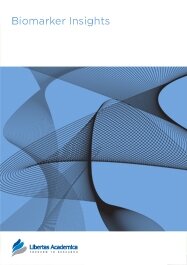

Publication Date: 29 Sep 2011
Type: Original Research
Journal: Biomarker Insights
Citation: Biomarker Insights 2011:6 107-118
doi: 10.4137/BMI.S8247

A pivotal role in guiding mesenchymal stem cell (MSC) differentiation has recently been attributed to the primary cilium. This solitary, non-motile microtubule-based organelle emerging from the cell surface acts as a sensorial membrane structure reflecting developmental and adaptive processes associated with pathologies including human cystic kidney disease, skeletal malformations, obesity and cancer. Given that the intrinsic hypoxic adaptation of MSC remains poorly understood within ischemic tissues or hypoxic tumours, we questioned whether the hypoxia inducible factor-1 (HIF-1) might be a downstream effector regulating cilium maintenance. We show that murine bone marrow-derived MSC cultured under hypoxic conditions (1.2% O2) lose their primary cilia in a time-dependent manner. Gene silencing of HIF-1 prevented cilia loss in hypoxic cultures, and generation of MSC expressing a constitutively active HIF-1 (MSC-HIF) was found to decrease primary cilium formation. A Wnt pathway-related gene expression array was also performed on MSC-HIF and indicated that the secreted Frizzled-related proteins (sFRP)-1, -3 and -4 were down-regulated, while sFRP-2 was up-regulated. Overexpression of recombinant sFRP-2 or gene silencing of sFRP-1, -3 and -4 in MSC led to primary cilium disruption. These results indicate a molecular signalling mechanism for the hypoxic disruption of the primary cilium in MSC involving an HIF-1/sFRP axis. This mechanism contributes to our understanding of the adaptive processes possibly involved in the oncogenic transformation and tumour-supporting potential of MSC. Our current observations also open up the possibility for the primary cilia to serve as a biomarker in MSC adaptation to low oxygen tension within (patho)physiological microenvironments.
PDF (2.33 MB PDF FORMAT)
RIS citation (ENDNOTE, REFERENCE MANAGER, PROCITE, REFWORKS)
BibTex citation (BIBDESK, LATEX)
XML
PMC HTML

I would like to extend my gratitude for creating the next generation of a scientific journal -- the science journal of tomorrow. The entire process bespoke of exceptional efficiency, celerity, professionalism, competency, and service.
Facebook Google+ Twitter
Pinterest Tumblr YouTube